
Historical Genre in Artists' Paintings
The historical genre, or historical painting, is a branch of painting that encompasses subjects depicted in various styles of visual art, representing real historical events, religious, mythological, and allegorical themes. The concept derives from the word "historia," which usually carries a broader meaning.
 Historical Genre. Karl Bryullov. The Last Day of Pompeii, 1833
Historical Genre. Karl Bryullov. The Last Day of Pompeii, 1833
The historical genre developed during the Renaissance. During this period, numerous paintings and frescoes with biblical and classical subjects emerged, characterized by large formats and multifigure compositions. The medieval painter and writer Leon Battista Alberti referred to historical painting as the noblest form of art, as it required considerable skill from the artist to portray the interactions and emotions of all depicted characters.
Types of the historical genre
The historical genre was considered the highest achievement for painters, so paintings were created only for significant themes with deep inner meaning.
Historical genre subjects are divided into five main directions, namely:
- Religious.
- Mythological.
- Allegorical.
- Literary.
- Historical.
The earliest religious works were created during the Gothic period. Later, ancient legends became fashionable, with ancient Roman and Greek gods becoming popular heroes. Mythological category also includes any paintings with fairy tales and epic themes.
 Historical Genre. Titian. Bacchus and Ariadne, 1522-1523
Historical Genre. Titian. Bacchus and Ariadne, 1522-1523
Allegory is a story that contains hidden meanings. Any image in a painting, whether it's a human figure, an animal, or an object, represents a particular concept, philosophy, or idea. Renaissance artists filled their works with symbols that only the initiated could decipher. Through the language of painting, masters critiqued state power, religion, or specific figures, but the secret signs were unintelligible to the average viewer.
 Historical Genre. Ambrogio Lorenzetti. The Allegory of Good and Bad Government, 1337-1339
Historical Genre. Ambrogio Lorenzetti. The Allegory of Good and Bad Government, 1337-1339
Paintings of the literary direction are based on motifs taken from the works of poets and writers. Masters drew inspiration from the plays of William Shakespeare, the verses of Henry Longfellow, and the tales of Lewis Carroll.
 Historical Genre. Mark Lancelot Symons. Fairy tale
Historical Genre. Mark Lancelot Symons. Fairy tale
The historical category encompasses all works depicting significant events of the past. This direction reached its zenith in the nineteenth century as interest in religion and myths waned. Exhibitions showcased masterpieces dedicated to the great achievements of military leaders and public figures.
The Birth of the Historical Genre
In the Middle Ages, history was synonymous with the deeds of saints, ascetics, and religious zealots. The work of painters was directed towards uplifting morality and strengthening the morals of society. Biblical scenes adorned the walls of churches, public buildings, town halls, and palaces.
A great master of the genre during the Renaissance was Masaccio, the creator of the frescoes in the Brancacci Chapel, who gained renown for his use of revolutionary techniques in linear perspective and chiaroscuro.
 Historical Genre. Masaccio. Baptism of neophytes, 1425-1426
Historical Genre. Masaccio. Baptism of neophytes, 1425-1426
Sandro Botticelli is famous for his paintings on mythological themes. His works, such as "Primavera" and "The Birth of Venus," are full of allegory and continue to spark lively discussions and debates among art historians.
 Historical Genre. Sandro Botticelli. Primavera, 1482
Historical Genre. Sandro Botticelli. Primavera, 1482
One of the most famous multi-figure frescoes by Leonardo da Vinci is "The Last Supper." Its complex perspective, deep drama, and the mastery in conveying the psychological states of the characters make it a vivid example of High Renaissance aesthetics.
 Historical Genre. Leonardo da Vinci. The Last Supper, 1495-1498
Historical Genre. Leonardo da Vinci. The Last Supper, 1495-1498
Among the Baroque masters working in the historical painting genre, Pieter Paul Rubens stands out. His works are characterized by an abundance of robust, naked bodies, complex compositional solutions, and a realistic depiction of the dynamics within the painting.
 Historical Genre. Peter Paul Rubens. Samson and Delilah, 1609
Historical Genre. Peter Paul Rubens. Samson and Delilah, 1609
The only surviving historical painting by Diego Velázquez is "The Surrender of Breda," dedicated to the ten-month siege of one of the Dutch cities by the Spaniards. The court painter aimed to showcase not only the triumph of the victors but also Spain's magnanimous treatment of the defeated, as the peace was concluded on favorable terms for the surrendering party.
 Historical Genre. Diego Velázquez. The Surrender of Breda, 1634-1635
Historical Genre. Diego Velázquez. The Surrender of Breda, 1634-1635
The Dutch genius Rembrandt is notable for an entire series of works dedicated to history and myths. "The Conspiracy of Claudius Civilis" is the largest painting in the master's entire oeuvre. The subject tells the story of the uprising of ancient inhabitants of the Netherlands against the Romans, as described by the philosopher Tacitus.
 Historical Genre. Rembrandt van Rijn. The Conspiracy of Claudius Civilis, 1661-1662
Historical Genre. Rembrandt van Rijn. The Conspiracy of Claudius Civilis, 1661-1662
The eighteenth century was a turning point for historical painting as it acquired academic status in all educational institutions across Europe. Interest in recent events grew, and in 1770, the British artist Benjamin West depicted his heroes for the first time in contemporary clothing.
 Historical Genre. Benjamin West. The Death of General Wolfe, 1770
Historical Genre. Benjamin West. The Death of General Wolfe, 1770
The French Revolution inspired artists to create outstanding paintings depicting the heroic and tragic events of that period, such as the works of Jacques-Louis David, "The Death of Marat" and "The Oath of the Horatii."
 Historical Genre. Jacques-Louis David. The Death of Marat, 1793
Historical Genre. Jacques-Louis David. The Death of Marat, 1793
The Blossoming of Historicism in the Visual Arts
The early nineteenth century was marked by Napoleon's triumphant march across Europe, which led to the creation of numerous masterpieces celebrating his achievements. The fall of the emperor made the theme of conquest unpopular, and artists turned their attention to scenes from the lives of ordinary people who suffered from the excessive ambitions of the Corsican ruler.
 Historical Genre. Francisco Goya. The Third of May 1808, 1814
Historical Genre. Francisco Goya. The Third of May 1808, 1814
Society was changing rapidly, and in Europe, the middle class expanded, increasing the number of viewers demanding new experiences. Classical heroes in ancient attire lost their former appeal, and the dramatization of the narrative took center stage in paintings. Paul Delaroche gained fame for his deeply emotional depictions of English kings' lives, while Jean-Léon Gérôme became well-known for his works in the style of historical anecdotes.
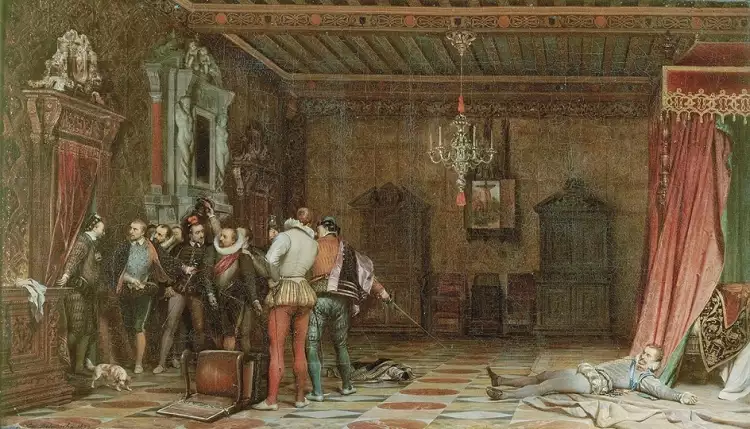 Historical Genre. Paul Delaroche. L’Assassinat du duc de Guise, 1834
Historical Genre. Paul Delaroche. L’Assassinat du duc de Guise, 1834
Motifs drawn from the novels of Walter Scott became fashionable in the British artistic community. This was facilitated by numerous archaeological discoveries that provided a complete understanding of the lives, costumes, and customs of knights. Pre-Raphaelite artists like Edward Coley Burne-Jones and Daniel Maclise were captivated by medieval romanticism.
 Historical Genre. Daniel Maclise. Knight's vow
Historical Genre. Daniel Maclise. Knight's vow
The Romantic concept unites the work of Russian masters such as Karl Brullov, Fyodor Bruni, and Konstantin Ivanov. Their works reflected the perception of history typical of the society of the first half of the 19th century.
 Historical Genre. Fyodor Bruni. The Bronze Serpent, 1841
Historical Genre. Fyodor Bruni. The Bronze Serpent, 1841
With the rise of democratic sentiments in the visual arts, a realistic direction developed. The works of recognized Russian masters such as Vasily Surikov, Ilya Repin, and Vasily Perov are imbued with strong emotions and true dramatization.
 Historical Genre. Vasily Surikov. La Boyarine Morozova, 1887
Historical Genre. Vasily Surikov. La Boyarine Morozova, 1887
History continued to occupy the minds of creators in the 20th century. Revolutions, world wars, and social upheavals became the themes of many artists' work. The catalogs of Very Important Lot include paintings with historical themes by Russian and European masters of the past and present.

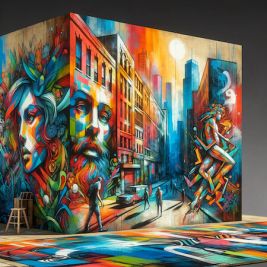 Street Art and Neo-Expressionism: Vital Art Trends of 2023
Street Art and Neo-Expressionism: Vital Art Trends of 2023 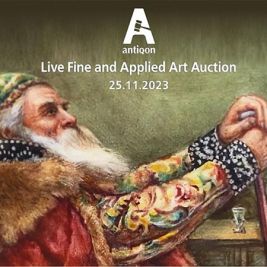 Live Fine and Applied Аrt Auction No.8 of the Antiqon trading platform
Live Fine and Applied Аrt Auction No.8 of the Antiqon trading platform  Bold Rebranding: A 2024 Design Trend Shaping Brand Identities
Bold Rebranding: A 2024 Design Trend Shaping Brand Identities 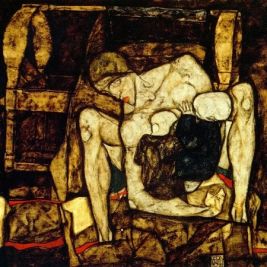 The painting "The Blind Mother" by Egon Schiele is a reflection of the artist's complex relationship with his own mother
The painting "The Blind Mother" by Egon Schiele is a reflection of the artist's complex relationship with his own mother 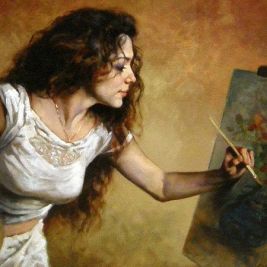 Painting: its types, styles, genres, techniques, and history of origin
Painting: its types, styles, genres, techniques, and history of origin 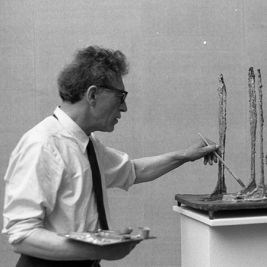 Alberto Giacometti was a great sculptor of the 20th century who relentlessly shattered the stereotypes of art in search of creative self-expression
Alberto Giacometti was a great sculptor of the 20th century who relentlessly shattered the stereotypes of art in search of creative self-expression 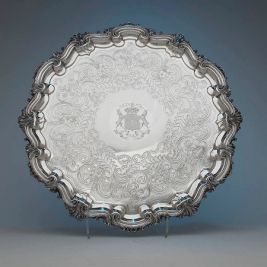 Sheffield silver - exquisite beauty, accessible to ordinary people
Sheffield silver - exquisite beauty, accessible to ordinary people 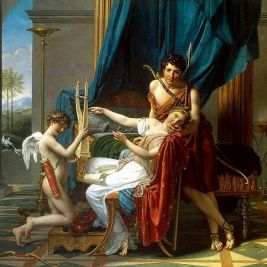 Neoclassicism: once again, an alignment with ancient ideals!
Neoclassicism: once again, an alignment with ancient ideals! 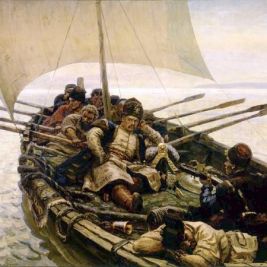 The painting "Stepan Razin" by Vasily Surikov is a tragic truth that triumphs over the epic image
The painting "Stepan Razin" by Vasily Surikov is a tragic truth that triumphs over the epic image  The painting "The Beekeeper" by Ivan Kramskoi is an expressive peasant figure against the backdrop of a landscape
The painting "The Beekeeper" by Ivan Kramskoi is an expressive peasant figure against the backdrop of a landscape